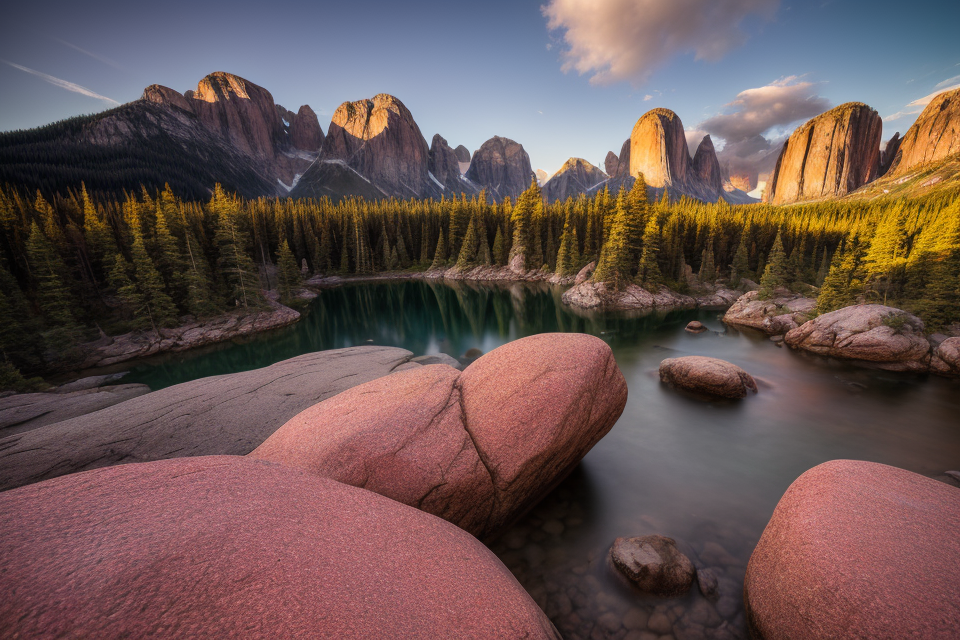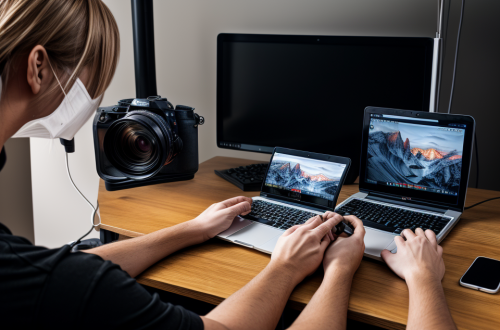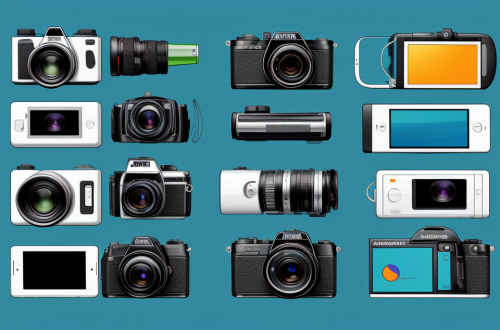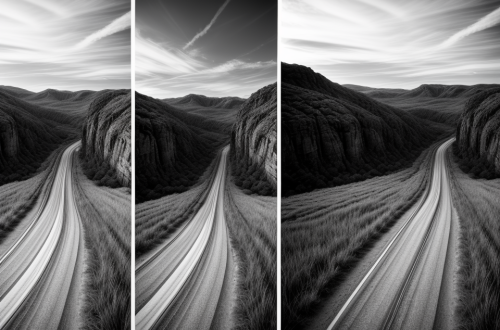Are you interested in capturing stunning images that tell a story? Then, digital photography is the perfect way to unleash your creativity and capture memories that last a lifetime. With the advancement of technology, digital photography has become more accessible and convenient, making it possible for anyone to become a photographer. From landscape to portrait photography, digital photography offers endless possibilities for experimentation and creativity. In this article, we will explore the world of digital photography, including techniques, tools, and tips to help you capture stunning images that showcase your unique perspective. So, grab your camera, and let’s dive into the exciting world of digital photography!
Understanding Digital Photography
The Basics of Digital Photography
The History of Digital Photography
Digital photography has come a long way since its inception in the late 20th century. The first digital camera was created in 1975 by Steven Sasson, an engineer at Kodak. This groundbreaking device weighed 3.5 pounds and recorded grayscale images at a resolution of 0.01 megapixels. Over the years, digital cameras have evolved dramatically, with significant improvements in image quality, portability, and functionality.
How Digital Cameras Work
Digital cameras capture images using an image sensor, which converts light into digital signals. These signals are then processed by the camera’s electronic circuitry and stored as digital image files. The sensor’s size, resolution, and type of pixels directly impact the image quality and detail. Larger sensors, like those found in DSLRs and mirrorless cameras, generally produce better image quality in low-light conditions and offer greater dynamic range.
Image Resolution and File Formats
Image resolution refers to the number of pixels in an image, typically expressed as the width and height in pixels. Higher resolutions result in larger file sizes and more detailed images. Common resolutions include 640×480 (VGA), 1280×720 (720p), 1920×1080 (1080p), and 3840×2160 (4K). When saving images, it’s essential to consider the intended use, file size limitations, and the required image quality. Popular file formats include JPEG, TIFF, and RAW. JPEGs are compressed and suitable for sharing and printing, while RAW files retain more image data and offer greater flexibility during post-processing.
The Benefits of Digital Photography
- Flexibility and convenience: One of the primary advantages of digital photography is the flexibility it offers. Unlike traditional film photography, where once the film is exposed, it cannot be changed, digital photography allows for immediate review of the images, enabling photographers to experiment with different settings and compositions until they achieve the desired results. Additionally, digital cameras can store multiple images, making it easy to capture and review a variety of shots without the need for extra film rolls.
- Post-processing capabilities: Another significant benefit of digital photography is the ability to edit and enhance images using post-processing software. This allows photographers to correct any errors, adjust the exposure, remove unwanted elements, and add special effects to their images, giving them greater control over the final result.
- Sharing and storage options: Digital photography also offers numerous options for sharing and storing images. With the rise of social media platforms, photographers can easily share their work with a wide audience, while cloud storage provides a secure and accessible way to store and access images from anywhere. This makes it easy for photographers to collaborate with others, showcase their work, and preserve their memories for future generations.
Digital Photography Techniques
Composition
Composition is one of the most important aspects of digital photography. It refers to the way that elements are arranged within the frame of the photograph. By using composition techniques, photographers can create images that are visually appealing and tell a story. Here are some of the most important composition techniques that every photographer should know:
- The rule of thirds
- Leading lines
- Framing and symmetry
The Rule of Thirds
The rule of thirds is a basic principle of composition that involves dividing the frame into thirds vertically and horizontally, creating a grid of nine equal parts. By placing the subject of the photograph at one of the intersection points of this grid, photographers can create a more dynamic and visually pleasing image.
For example, if you are photographing a landscape, you might place the horizon line one-third of the way up the frame, and the trees or buildings on either side of the frame along the grid lines. This creates a more dynamic image that draws the viewer’s eye through the frame.
Leading Lines
Leading lines are a composition technique that involves using lines within the frame to lead the viewer’s eye towards the subject of the photograph. These lines can be anything from a road or pathway to a line of trees or buildings. By using leading lines, photographers can create a sense of depth and movement in the image.
For example, if you are photographing a cityscape, you might use the lines of the buildings to lead the viewer’s eye towards the subject of the photograph. This creates a sense of depth and movement, and draws the viewer’s eye towards the subject of the photograph.
Framing and Symmetry
Framing and symmetry are composition techniques that involve using the edges of the frame to create a sense of balance and symmetry in the image. This can be done by using natural frames, such as trees or archways, to frame the subject of the photograph.
For example, if you are photographing a building, you might use the columns of the building to create a natural frame around the subject of the photograph. This creates a sense of balance and symmetry, and draws the viewer’s eye towards the subject of the photograph.
Overall, these composition techniques can help photographers create images that are visually appealing and tell a story. By using the rule of thirds, leading lines, framing and symmetry, photographers can create images that are dynamic, balanced, and visually pleasing.
Lighting
Proper lighting is one of the most critical factors in digital photography. It can make or break an image, and understanding the different types of lighting is essential for capturing the perfect shot.
Natural Light
Natural light is the most common type of lighting used in digital photography. It is often the preferred lighting source because it is free, versatile, and can create beautiful, soft, and natural-looking light. Natural light can be found during the day, and it is best to take photographs during the golden hour, which is the hour before sunset or the hour after sunrise when the light is soft and diffused.
Artificial Light
Artificial light is often used when natural light is not available or when a specific lighting effect is desired. There are several types of artificial light sources, including fluorescent lights, LED lights, and strobes. Each type of artificial light has its own advantages and disadvantages, and it is essential to choose the right light source for the desired effect.
Flash Photography
Flash photography is a type of artificial light that is often used to add light to a scene when there is not enough natural light. Flashes can be built into the camera or purchased as an external accessory. When using flash, it is important to be aware of the distance between the subject and the flash, as well as the angle of the flash. The angle of the flash can be adjusted to create different lighting effects, such as soft light or hard light.
It is important to note that lighting is just one aspect of digital photography, and understanding the other techniques, tools, and tips can help you capture the perfect shot. Experimenting with different lighting setups and techniques is also crucial for achieving the desired effect.
Exposure
Exposure is one of the most critical aspects of digital photography. It refers to the amount of light that enters the camera’s sensor and is recorded as an image. The three key elements that affect exposure are aperture, shutter speed, and ISO.
- Aperture: Aperture refers to the size of the camera’s aperture, which is the opening in the lens through which light passes. Aperture is measured in f-stops, and a larger aperture (a smaller f-stop number) allows more light to enter the camera, while a smaller aperture (a larger f-stop number) allows less light in. Aperture also has an effect on the depth of field in an image, with a larger aperture resulting in a shallower depth of field and a smaller aperture resulting in a deeper depth of field.
- Shutter speed: Shutter speed refers to the length of time that the camera’s shutter is open, allowing light to enter the sensor. A slower shutter speed allows more light to enter the camera, while a faster shutter speed allows less light in. Shutter speed also affects the motion in an image, with a slower shutter speed resulting in a more blurred image and a faster shutter speed resulting in a sharper image.
- ISO: ISO refers to the sensitivity of the camera’s sensor to light. A higher ISO setting makes the sensor more sensitive to light, allowing for handheld shooting in low light conditions. However, a higher ISO setting also results in more noise in the image. Therefore, it is essential to balance the ISO, aperture, and shutter speed to achieve the desired exposure.
In conclusion, exposure is a critical aspect of digital photography, and understanding how to control aperture, shutter speed, and ISO is essential for capturing the perfect image. By balancing these elements, photographers can achieve the desired exposure and creative effects in their images.
Digital Photography Tools
Camera Equipment
In the world of digital photography, the camera equipment you use plays a crucial role in determining the quality of your photographs. While the camera itself is undoubtedly the most important piece of equipment, there are several other accessories that can significantly enhance your photography experience.
Lenses
The lens is the most essential camera equipment for digital photography. A good lens can help you capture stunning images, while a poor quality lens can result in blurry or distorted photographs. Different lenses are designed for different purposes, such as wide-angle shots, zooming in on distant objects, or capturing portrait shots.
- Zoom Lenses: These lenses are versatile and offer a range of focal lengths, making them ideal for shooting a variety of subjects. They are particularly useful for wildlife and sports photography, as they allow you to zoom in on your subject without having to move physically closer.
- Prime Lenses: These lenses have a fixed focal length, which makes them ideal for specific types of photography. They are generally sharper and offer better image quality than zoom lenses, but they can be more challenging to use if you need to adjust your shot quickly.
- Macro Lenses: These lenses are designed for close-up photography and allow you to capture stunning details of small objects. They are perfect for shooting insects, flowers, and other small details that might be overlooked in a wider shot.
Tripods
A tripod is an essential piece of camera equipment for any photographer, especially those who want to capture sharp and well-composed images. Tripods are designed to keep your camera stable and steady, reducing the risk of camera shake and ensuring that your images are crisp and clear.
- Benefits of Using a Tripod: A tripod allows you to capture images in a variety of shooting conditions, including low light, long exposures, and when using a remote shutter release. It also helps you to frame your shot more accurately and experiment with different compositions.
- Types of Tripods: There are several types of tripods available, including portable and heavy-duty models. Portable tripods are ideal for travel and everyday use, while heavy-duty tripods are designed for more demanding shooting conditions, such as shooting with long lenses or in high winds.
Camera Bags
A camera bag is essential for protecting your camera equipment and keeping it organized. Camera bags come in a variety of sizes and styles, from small pouches for carrying essential items to large backpacks that can hold multiple lenses, flashes, and other accessories.
- Types of Camera Bags: There are several types of camera bags available, including shoulder bags, backpacks, and belt bags. Shoulder bags are ideal for everyday use and provide quick access to your camera equipment. Backpacks are perfect for travel and hiking, as they distribute the weight of your equipment evenly and allow you to carry multiple items. Belt bags are ideal for photographers who need to carry their equipment quickly and discreetly.
In conclusion, the camera equipment you use can have a significant impact on the quality of your photographs. Lenses, tripods, and camera bags are all essential accessories that can help you capture stunning images and enhance your photography experience. By investing in high-quality camera equipment, you can ensure that you are always ready to capture the perfect shot, no matter what situation you find yourself in.
Editing Software
Editing software is an essential tool for digital photographers as it allows them to enhance and modify their images to achieve the desired look and feel. Some of the most popular editing software used by photographers include Adobe Photoshop, Lightroom, and GIMP.
- Adobe Photoshop is a powerful and versatile image editing software that offers a wide range of tools and features for photographers to edit and manipulate their images. Some of the key features of Photoshop include layering, masking, blending, and retouching. Photoshop is a great tool for creating complex images, composites, and graphics.
- Lightroom is a photo management and editing software developed by Adobe. It offers a streamlined workflow for photographers to import, organize, and edit their images. Lightroom has a wide range of features, including basic editing tools, color correction, and photo manipulation. It also has a robust library system that allows photographers to manage their images effectively.
- GIMP is a free and open-source image editing software that offers many of the same features as Photoshop. It is a great alternative for photographers who are on a budget or who prefer to use open-source software. GIMP has a steep learning curve, but once mastered, it can be a powerful tool for image editing and manipulation.
Overall, editing software is an essential tool for digital photographers as it allows them to enhance and modify their images to achieve the desired look and feel. Photographers should choose the software that best suits their needs and preferences, taking into account factors such as cost, ease of use, and features.
Accessories
- Filters: Filters are a great way to enhance the quality of your digital photographs. They come in various types, such as UV filters, polarizing filters, and graduated filters. UV filters help reduce the amount of ultraviolet light that enters the lens, while polarizing filters eliminate glare and reflections from water, glass, and other surfaces. Graduated filters, on the other hand, have a gradient of colored glass that helps balance the exposure between bright and dark areas of a scene. Filters can be attached to the front of the lens and can be used to enhance colors, protect the lens, or even to create unique effects.
- Tripods: Tripods are an essential accessory for photographers who want to capture sharp images. They provide stability and allow you to use slower shutter speeds without causing camera shake. Tripods also help you achieve more creative shots, such as panoramas and time-lapse photography. There are various types of tripods available, including mini-tripods, monopods, and full-size tripods. It’s important to choose a tripod that is sturdy and adjustable to suit your needs.
- Remote shutter releases: Remote shutter releases are a great tool for preventing camera shake when taking photos. They allow you to trigger the camera’s shutter without touching it, which can help to reduce camera shake and create sharper images. There are various types of remote shutter releases available, including wired and wireless options. Wired releases connect directly to the camera’s remote port, while wireless releases use radio frequencies to communicate with the camera. Remote shutter releases are especially useful when taking photos in low light conditions or when using a long exposure.
Tips for Taking Better Digital Photos
Preparation
Scouting Locations
Before you begin taking photos, it’s important to scout your location. This means walking around and getting a feel for the area, looking for interesting features, such as unique buildings, natural landmarks, or interesting lighting. This will help you to plan your shots and make the most of the available scenery.
Planning Shots
Once you have scouted your location, it’s time to plan your shots. Consider what you want to capture and how you can frame it to create a compelling image. Think about the lighting, the time of day, and the angle you’ll need to get the shot you want. You may also want to consider using a tripod to help stabilize your camera and ensure your shots are sharp.
Familiarizing Yourself with Your Equipment
It’s important to be familiar with your camera and all of its features before you start taking photos. This includes understanding how to use the different settings, such as aperture, shutter speed, and ISO, as well as how to focus and use the autofocus feature. Taking the time to familiarize yourself with your equipment will help you to get the most out of your camera and capture the best possible shots.
Shooting
Light and Weather Conditions
One of the most important factors to consider when taking digital photos is the light and weather conditions. Light is crucial for creating the desired mood and atmosphere in a photo, and it can also affect the colors and contrast. Photographers should try to take advantage of natural light when possible, as it is usually the best light source. However, if there is not enough natural light, artificial light sources such as flashes or lamps can be used to supplement it. Additionally, it is important to pay attention to the time of day and the weather conditions, as these can also affect the lighting in a scene.
Experimenting with Different Angles and Perspectives
Another important aspect of shooting digital photos is experimenting with different angles and perspectives. This can help to add depth and interest to a photo, and it can also create a unique viewpoint that is not often seen. Photographers should try to get low or high shots, as well as shoot from different angles such as overhead or bird’s eye view. They should also try to find unique compositions and patterns in their surroundings, and experiment with different framing techniques.
Being Mindful of Your Surroundings
When taking digital photos, it is important to be mindful of your surroundings. This includes not only the physical environment, but also the people and animals that may be present. Photographers should try to capture the essence of a place or person, and they should also be aware of any cultural or social norms that may be present. Additionally, photographers should be respectful of their subjects and try to capture them in a natural and authentic way.
Post-processing
- Enhancing photos with editing software
- Utilizing software such as Adobe Photoshop or Lightroom to make adjustments to the images
- Taking advantage of the various tools and features available in these programs to enhance the quality of the photos
- Adjusting exposure, color, and contrast
- Using sliders and other controls to adjust the exposure, color balance, and contrast of the image
- Making fine-tuned adjustments to achieve the desired look and feel of the photo
- Cropping and resizing images
- Removing unwanted elements from the photo by cropping it to the desired aspect ratio
- Resizing the image to the appropriate size for the intended use, such as printing or sharing online
In conclusion, post-processing is an essential part of digital photography. It allows photographers to make adjustments to their photos and enhance their quality. By utilizing editing software, adjusting exposure, color, and contrast, and cropping and resizing images, photographers can take their photos to the next level and create stunning images that truly capture the moment.
Sharing and Archiving
In today’s digital age, sharing and archiving your photos is easier than ever before. With just a few simple steps, you can ensure that your memories are preserved and shared with others. Here are some tips for sharing and archiving your digital photos:
- Backing up your photos: It’s essential to back up your photos regularly to prevent data loss. You can use external hard drives, cloud storage services, or both to store your photos safely. It’s recommended to keep at least two copies of your photos in different locations.
- Sharing your work on social media and online platforms: Social media platforms like Instagram, Facebook, and Twitter are great places to share your photos with friends and family. You can also share your work on online photography communities like Flickr and 500px. This is a great way to get feedback and connect with other photographers.
- Printing your favorite photos: While digital photos are convenient, there’s nothing quite like holding a physical print in your hands. You can print your favorite photos at home or at a photo lab. You can also create photo books, prints, and other physical products to preserve your memories.
Overall, sharing and archiving your digital photos is essential to ensure that your memories are preserved and shared with others. By following these tips, you can ensure that your photos are safe and accessible for years to come.
FAQs
1. What is digital photography?
Digital photography is the art and practice of capturing, editing, and sharing images using digital cameras or smartphones. Unlike traditional film photography, digital photography allows photographers to instantly review and edit their images, making it a highly accessible and versatile medium.
2. What equipment do I need for digital photography?
To get started in digital photography, you will need a digital camera or smartphone with a camera function. As you become more experienced, you may want to invest in additional equipment such as lenses, tripods, and external flashes to enhance your photography skills.
3. How do I take better pictures?
Taking better pictures involves understanding the basics of photography such as composition, lighting, and exposure. It also involves practicing your skills, experimenting with different techniques, and learning from other photographers. Some tips for improving your photography skills include paying attention to the rule of thirds, using natural light, and learning how to use your camera’s settings.
4. What are some basic camera settings I should know?
Some basic camera settings that every photographer should know include aperture, shutter speed, and ISO. Aperture controls the amount of light that enters the camera, shutter speed controls the length of time the camera’s shutter is open, and ISO controls the camera’s sensitivity to light. Understanding how to use these settings can help you capture better images in a variety of shooting conditions.
5. How do I edit my digital photos?
There are many software programs available for editing digital photos, including Adobe Photoshop and Lightroom. These programs allow you to adjust the brightness, contrast, and color of your images, as well as remove unwanted elements and enhance details. There are also many mobile apps available for basic editing on the go.
6. How do I share my digital photos?
There are many ways to share your digital photos, including posting them on social media, creating a personal website or blog, and printing them at home or at a professional lab. Sharing your photos with others can help you connect with other photographers and gain feedback on your work.





